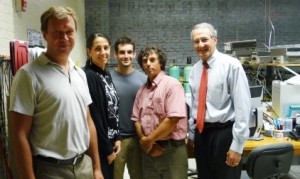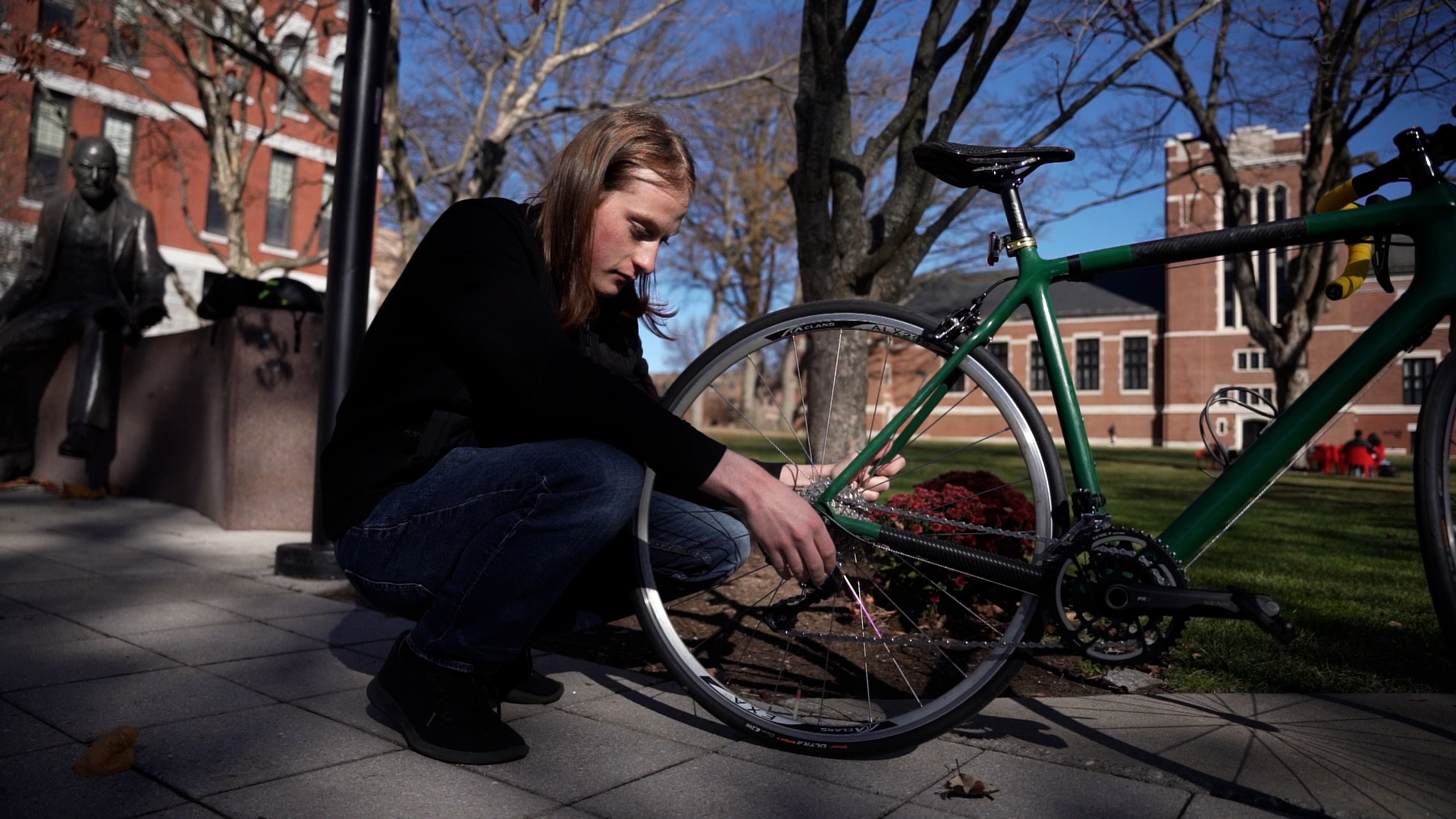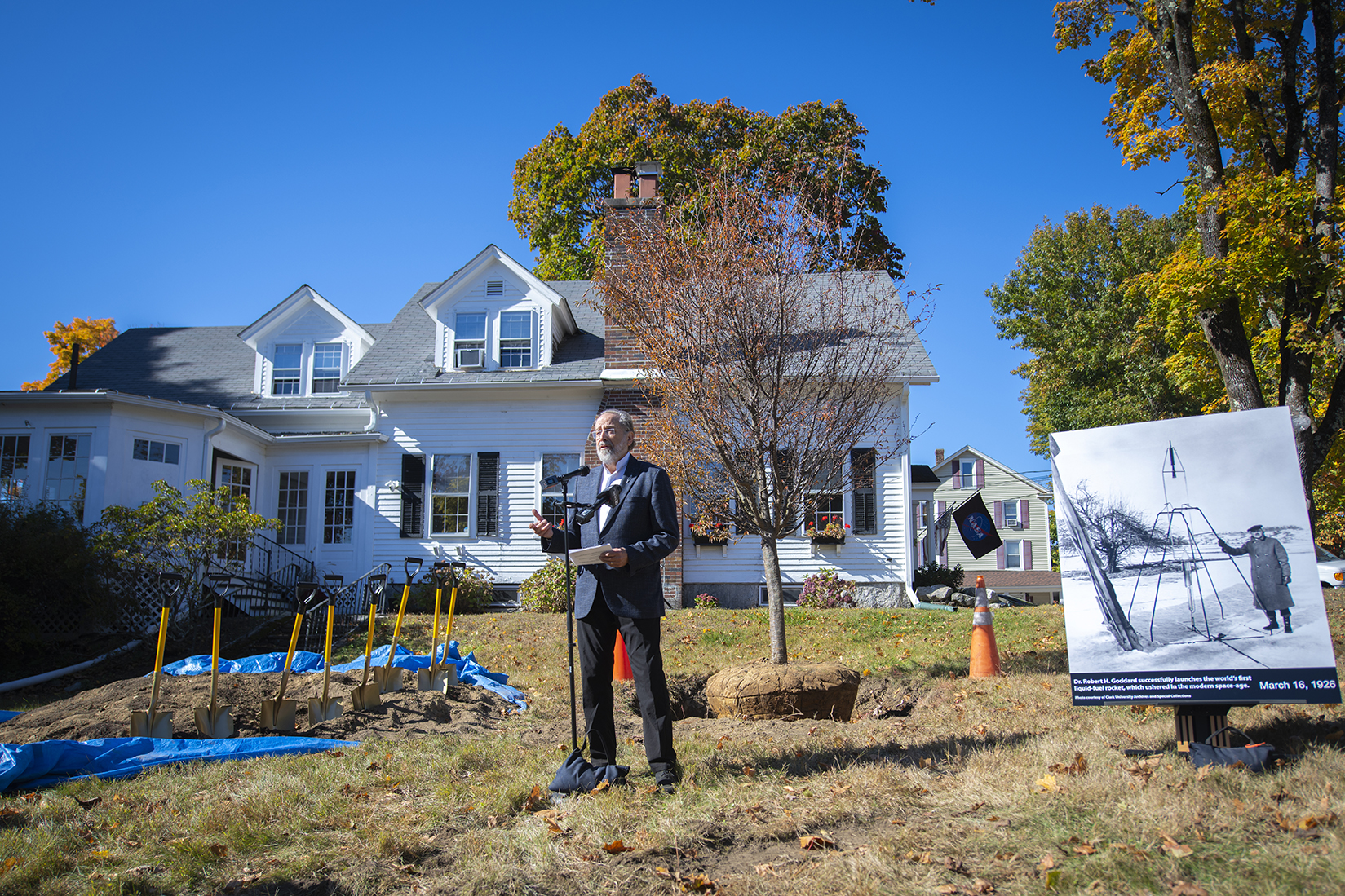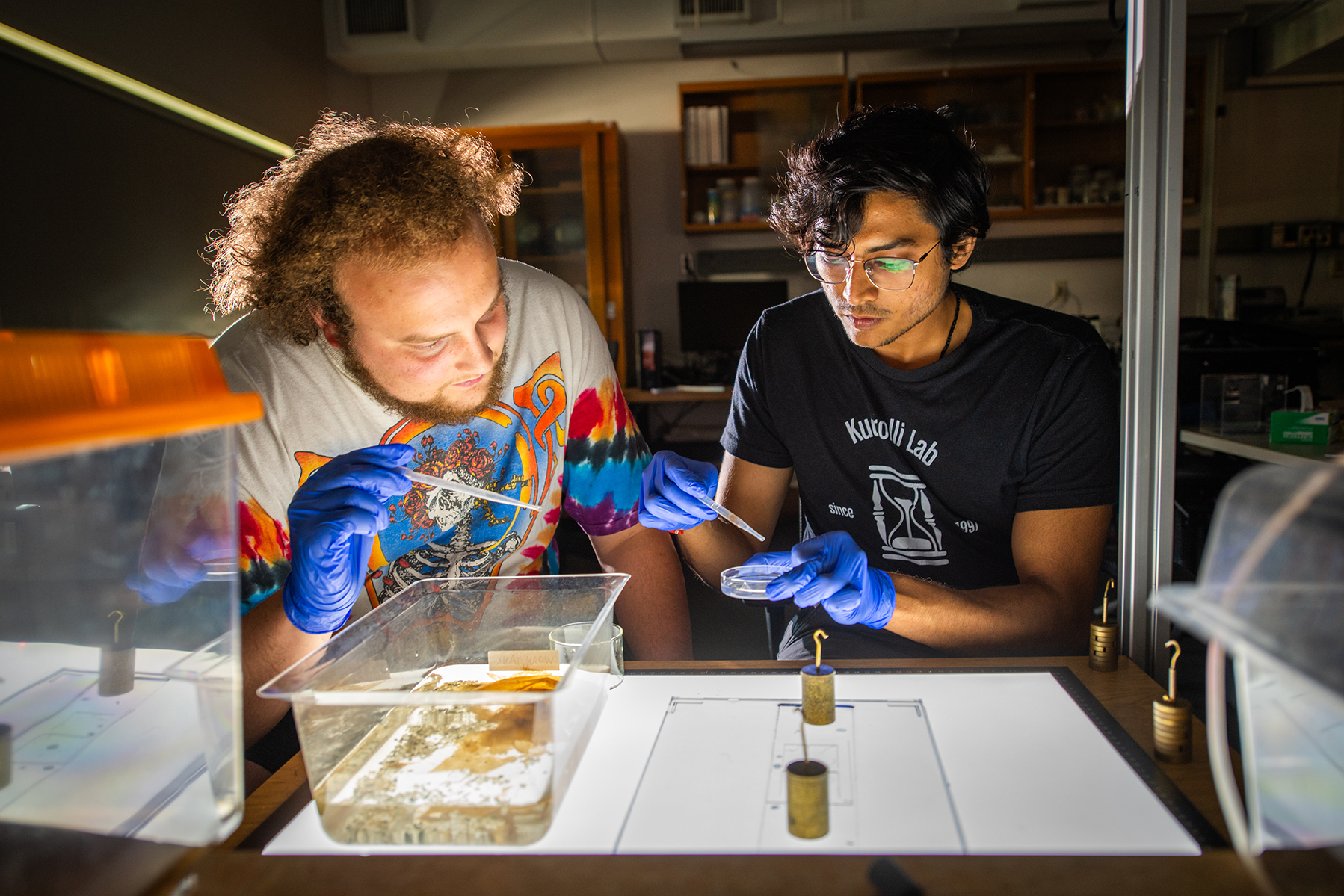Jeffrey A. Simon, director of the Massachusetts Recovery & Reinvestment Office, came to Clark University with a small entourage on Monday (Aug. 30) to admire an innovative “green” technology under development by Professor Charles Agosta, of the Physics Department at Clark.
Simon was also following the money—traveling the state at the behest of Gov. Deval Patrick to visit recipients of federal stimulus grants from the Department of Energy. Machflow Energy Inc., Agosta’s small startup company housed at Clark, received $1 million.
At the gathering in the Machflow laboratory in the basement of the Math-Physics Building, Agosta explained prototype models of a device that holds promise for providing clean and more effective cooling in a range of commercial uses, such as with electric car batteries and in computers.
Simon called Agosta’s startup “interesting and exciting” with the “potential to have a big impact. This stimulus money is an investment in the future, part of getting people back to work.”
As reported in the Worcester Telegram & Gazette (Aug. 31): “Machflow was formed in 2005 and funded in 2006, according to Mr. Agosta. Since its creation, the four-employee business has secured $750,000 from small investors known as “angels” and $1 million from the venture capital firm Kleiner Perkins Caufield & Byers. The Phase II grant of $1 million from the federal government follows a $150,000 Phase I grant that was awarded to Machflow last year. So far, the company has filed eight patent applications regarding its technology, which involves cooling based on a principle of physics called the Bernoulli Effect: force a gas through a narrow pipe or channel, and the pressure will go down as well as the temperature.”

Agosta notes that the grant was the result of a team effort with other Machflow employees: Director of Engineering, Sergei Ivanov as the Principle Investigator and Director of Fluid Physics, and Elham Ghaem-Maghami as one of the main writers. Daniel Olecki an engineering student from WPI also contributed.
Courses taught by Agosta at Clark include Energy and the Environment, Atomic and Nuclear Physics, Advanced Electronics, and Technology of Renewable Energy. He and his students have developed a pulsed magnetic field laboratory where experiments are performed in the highest magnetic fields available at any university in the United States.
Clark students benefit greatly in having teaching faculty who are also involved in cutting-edge research, and Agosta’s business venture demonstrates how lab-based innovations can be applied to solve real-world problems, said Nancy Budwig, Associate Provost and Dean of Research. “Students learn best when they get to see the authentic excitement in the eyes of their professors. Clark offers an educational experience where graduates and undergraduates get to share the enthusiasm and be part of the process.”
Agosta, who chairs the 3/2 Engineering Program Committee at Clark, received his B.A. from Wesleyan University and his Ph.D. from Duke University. He did post-doctoral work at Harvard University and at the Francis Bitter National Magnet Laboratory at the Massachusetts Institute of Technology and joined the Clark faculty in 1991.
“We’ve proven this works,” Agosta told the news reporter and other visitors to the Machflow lab. “Now we have to get it packaged to something practical.”




